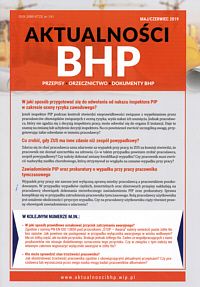
- How to check if a mixture is carcinogenic or mutagenic (1)
The basic document for an employer referring to carcinogens or mutagenic substances is the regulation on chemical substances, their mixtures, agents or technological processes carcinogenic or mutagenic in the work environment. However, the Regulation does not contain a detailed list of such substances and preparations. So where to check if the mixture is indicated as carcinogenic or has a mutagenic effect?
- Noise level in open space offices (2)
In a company employing computer programmers, there was a problem with employee complaints about excessive noise after purchasing several new laptops.
- Ventilation in the workplace when measuring concentration below 0.1 NDS (3)
At the workplace, the technician lacquers small parts (varnish: irritant, dangerous). The room has general ventilation. Measurement of the concentration of substances carried out at the workplace is below 0.1 NDS. Is it obligatory to use local ventilation in this situation, even though general ventilation provides us with appropriate parameters of the working environment? How should the entries in the safety data sheets be interpreted?
- Storage of chemical products (3)
Laboratory cabinets are reserved for the workplace to store chemical reagents that pose a risk (cabinets are not intended for storage of combustible substances). What documents must such a wardrobe have (instructions for use, certificates of compliance)?
- Registers of employees exposed to harmful factors (4)
How to keep a register of employees exposed to biological factors? Can you create a record once and then only every year to add employees who start work? If it is a paper register, is it enough to add employees on a separate sheet, or to create a new register every year? What should the cooperation with the HR department look like, how should the employees inform the OHS employee about changes so that these registers are well conducted?
Aktualności BHP (OSH News) - full list







